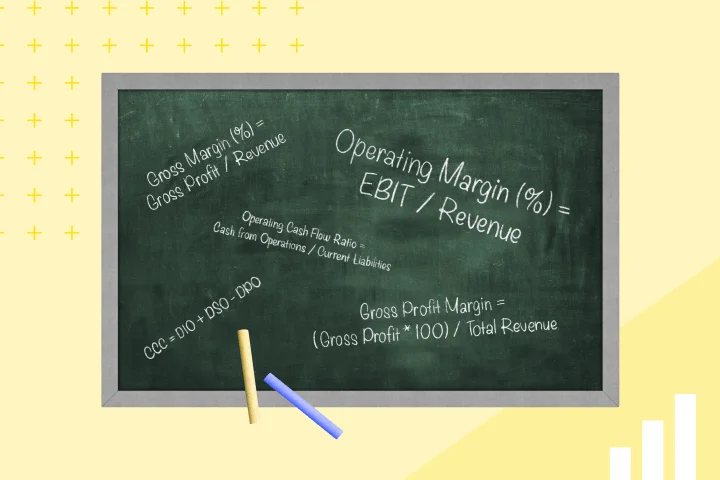Spend a few minutes talking with an account payables (AP) pro, and they’ll start to share some of the challenges they face with invoice management. For many organizations, it is a labor-intensive process that demands manually inputting, coding, and verifying each invoice. The average AP pro can only process five manual invoices per hour, which industry experts estimate costs $12-30 per invoice.
Manual invoice processing invites a series of additional challenges. First, it’s prone to human error, and simple mix-ups can take days to rectify. In addition, it creates delays in processing the invoice and payment. The AP team needs to confirm approval of payment, which can take days and multiple calls or emails to sort out. Finally, manual input can lead to duplicate – or lost – invoices.
These complications can lead to higher processing costs, accounting errors, delayed payments, and frustrated suppliers.
Multiply that by the invoices coming from hundreds or thousands of vendors, and it’s easy to see why this is a big challenge.
What is Invoice Management?
Invoice Management is the method that businesses use to track and pay invoices from their suppliers. It’s typically done by the AP department as part of procurement and involves multiple steps:
There are six steps in processing an invoice. In traditional AP departments, these steps are done manually, while in modern AP departments many or all of these steps are done automatically.
- Receiving an invoice from the supplier
- Recording the data into the payment system
- Validating the invoice to ensure it matches a purchase order
- Verifying the invoice to ensure the items listed on the purchase order were received
- Paying for services to the supplier
- Documenting the transaction in accounting or ERP software
When done correctly, invoice management speeds up the billing and payment process, keeping suppliers happy.
Different Invoice Types
There are a number of different types of invoices used by businesses, each with different functions.
- One-time Transaction Invoices
- Proforma invoice – an estimated invoice that includes estimated cost, delivery date, and other details
- Sales invoice – request for payment
- Overdue invoice – sales invoice for a payment that is past due
- Consolidated invoice – a single sales invoice for multiple purchases
- Project Invoices
- Retainer invoice – request for prepayment in a retainer arrangement
- Interim invoice – partial invoice to cover a portion of the project
- Timesheet invoice – invoice based on hours spent working on a project
- Final invoice – last invoice sent at the end of a project with the balance due
- Invoices a memos
- Credit memo – used when a buyer owes the seller money and issues a credit, often because an order was canceled or returned
- Debit memo – used to make price increases to an already submitted sales invoice
- Mixed invoices – contains both credit and debit information on a single memo
- Other invoices
- Commercial invoice – document created as proof of an international transaction
- Recurring invoice – sent for products and services that are offered repeatedly
Best Practices for the Invoice Management Process
Most businesses prefer to think about accounts receivable rather than accounts payable and don’t always allocate the necessary resources to manage invoices. This can cost money, as late payments can include payment penalties or surcharges and alienate key suppliers.
These practices will help keep your AP team stay on top of invoices and ensure that invoices are paid on time.
Prioritize Your Invoices
There are several different criteria you should be using when prioritizing payment processing: payment due date, terms, and bill type.
Different suppliers have different terms, which were previously negotiated with the procurement team. Some invoices may be net 15, while other suppliers have a net 30 relationship.
Prioritize payments based on their due date rather than when they arrived at your desk or inbox. A net 30 invoice that was received the day before a net 15 invoice can wait to be paid, which can help with cash flow.
A second prioritization involves payment terms. If some suppliers offer an early payment discount, those invoices should be prioritized.
Finally, bill type needs to be accounted for. Credit card bills with high interest rates should be paid before lower-interest cards, especially if you are maintaining a balance on the card.
Add Internal Controls
AP is an area that is ripe with fraud. When one employee enters vendors into the system, writes the checks, and processes the payment, they have the potential to abuse their position.
Implementing separation of duties within the AP team and adding internal controls protects against this type of activity. Limit access to the master vendor file to specific employees. This enables you to have more control over approved vendors and payments and makes it easy to track if there is fraud.
Additionally, creating an internal AP review process that spot checks invoices can show you if your team is functioning efficiently and accurately entering invoices into the system.
Check for Duplicate Payments
Paying an invoice twice is one of the risks of a manual AP process.
Depending on your relationship with the supplier, you may be able to get a refund, or the supplier might offer credit. When businesses receive duplicate payments, you can’t always rely on them to catch the error and return the money.
Schedule a weekly or monthly check can catch those errors and help you recover the money.
Cross-train and Rotate AP Team Members
AP teams run into trouble when team members are each responsible for one aspect of the process and other members don’t know how to perform each role in the process. This can cause a bottleneck and delays in payment if a team member is sick or on vacation.
Cross-train everyone on the team so that they can step in when a coworker is out. By eliminating the possibility of a single point of failure within the team, you can ensure that vendors will continue to be paid even when someone is out of the office.
Watch for Uncashed Checks
If a vendor hasn’t deposited your check, follow up with them to ensure that they received it. Uncashed checks can wreak havoc with cash flow, while checks that weren’t received could result in late fees, penalties, and disgruntled suppliers.
Create a monthly process where the AP team reviews all checks to ensure they were put in the bank and a follow-up process for situations where the check hasn’t been deposited.
Adopt Automated Invoice Processing
Each of the best practices described above should be followed regardless of whether AP processes are automated. However, automation will eliminate some issues and make managing invoices much more effortless.
It eliminates paper invoices from the process, as well as manual data entry. Invoices can be processed much more efficiently and eliminate some of the bottlenecks that occur while trying to pay suppliers.
With accounts payable automation, AP teams don’t need to worry about duplicate payments. Payment prioritization can be built into the automation platform, while internal controls can be set through role-based access to the platform.
Essential Features of an Invoice Management System
Your automated invoice management system should streamline your payment workflow, saving time and hassle for your employees while ensuring your vendors receive timely payments.
However, not every invoice automation system was created equally. Your system should scan invoices, validate that the details on the invoice match the purchase order, and generate approvals for payment.
Moreover, your system should integrate with your accounting or ERP software and automatically reconcile invoices with payments and receipts. Reporting is essential, as are insights into spending that help you track and optimize your expenses.
Try Real-Time Reporting with Mesh Payments
Mesh Payments’ Real-Time reporting tool provides the AP team with on-demand visibility into spending and payments. While traditional accounting practices limit visibility by month or quarter, finance teams can see transactions as they happen and get insights into their spending at the right time.
The tool offers cost-saving alerts, identifies underused software licenses, and ensures that you always optimize your spend. The tool’s reporting features enable customization through filters and custom fields, ensuring that your reports show the data that is important to your organization.
When employees make purchases, the tool captures receipts and reconciles them with the invoice automatically, saving hours in closing every month. Invoices are scanned with Mesh OCR, automatically filling in the invoice number, amount, vendor, and other critical information you need.
The system integrates with the leading ERP systems, allowing you to close your books faster at the end of the month.
Invoice Management Doesn’t Need to Be a Hassle
Introducing accounts payable automation into your processes can save your company time and money while taking human error out of the equation. It improves the payment process and helps vendors feel confident about working with your company.
Say goodbye to expense
reports forever
Download the Guide

-
Get the latest blogs from Mesh by subscribing to our newsletter







